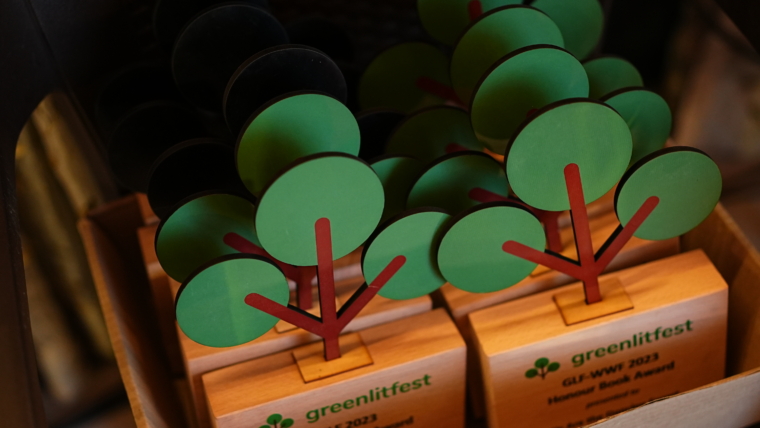Many writers are choosing to self-publish green books instead of going with known and established publishing houses
By Rati Girish
Often considered ‘niche’, books on the environment have been gradually gaining ground as concerns over climate change find greater traction worldwide. Many publishers acknowledge that this is potentially a huge market that needs to be developed. But information on readers of such books, particularly titles that are either beyond the conventional non-fiction narratives or have not been written by known names, remains vague and few seem to have made an active effort to identify them.
Yet, environmental issues are widely recognised as some of the most pressing issues facing humanity. They frequently make news headlines and there is no dearth of influential organisations and people invested in the field. For many passionate nature writers, this has been enough inspiration to strike out on their own instead of waiting for an established publisher to take on their manuscript.
Creative Control
When Pankaj Singh approached traditional publishing houses with his 2000-word, richly illustrated story about a young girl living in a remote Himalayan village, who dreams of coming face-to-face with the elusive snow leopard, he realised his manuscript didn’t meet the standard submission guidelines. He was told to edit his story down to 800 words. But editing it down to this length would mean losing the essence of his story. Determined to make his dream a reality, he decided to self-publish his book. In July, 2021, Yangdol came to life as a self-published picture book.
Similarly, for their passion project – The Call of the Sarus Cranes – Anavi Mullick and her mother, Seema wanted to ensure the best print quality. The book was all about the beauty and the majesty of the Sarus cranes shown through spectacular images taken by Anavi’s grandfather and they were unwilling to compromise on the printing process. “As these pictures were the main element, we wanted to do justice to them through the print. In all honesty, we did not look very hard for someone to publish the book for us. The few people we did reach out to either did not have time to publish our book, or could not satisfy our requirements.”
Overcoming Challenges
While self-publishing is a way out, it comes with a slew of challenges that are not always easy to surmount. When Prachi Singh, a Limca-record-holding Lepidopterist and butterfly conservationist, set out to self-publish Curious Coco – her book on butterflies – she quickly realised that she would be wearing many hats, that of an author, book designer, marketer, and social media expert. “I barely knew anything about publishing. Neither did my friends, colleagues or relatives have any experience. So finding my way through was definitely challenging.”
Sangeeta Bhansali, founder and chief curator of books at Kahani Tree, an independent children’s bookstore in Mumbai points out, “My concern for self-published books is that the content would have to be vetted since we place great emphasis on curation. With books backed by publishers, we can assume that quality checks and balances would be in place.” Given this concern, it’s important for self-published authors to make an extra effort on their content.
A vital consideration, while doing this, is the expense. Apart from payments for editing and designing, the initial printing costs are a heavy expense, especially when one isn’t sure if the stocks would sell. As such estimating the number of copies to print can prove to be tricky. Most self-published authors tend to go with small print-runs. But the fall out of this is that the book price often becomes uneconomical for average buyers. For instance, Pankaj Singh printed only 350 copies of Yangdol and had to price them at Rs 800 per book.
Most self-published authors agree that the biggest challenges facing them are discoverability and sales. “Marketing has been a slow and tedious process. It has involved talking and meeting with various people. We are yet to see the outcome of this and are still learning the intricacies of the market,” says Anavi.
Yet within all these challenges, lies an opportunity to discover and build readership within the massive community of nature lovers and enthusiasts. For many, a good place to begin is social media. Both Prachi and Pankaj used social media handles to publicise their books. There are countless social media pages that cater specifically to those interested in environmental issues. From organisations such as WWF, publications like Mongabay, volunteer-led initiatives like the Indian Youth Climate Network and the Earth Book Club, and literature festivals like the newly-minted Greenlitfest – one needs to spend some time going over various pages, finding the best fit and actively engaging online.
However, this needs to be substantiated with meaningful on-the-ground partnerships. Pankaj found that tying up with the independent bookstore, Champaca in Bengaluru helped him reach out to the right target audience and boost sales. Located in heart of Bengaluru – one of the largest markets for English books in India – Champaca actively promotes diverse books on specially curated subjects including nature writing and has a dedicated audience. When Pankaj reached out to them, he found them surprisingly forthcoming. They even reduced their margin to accommodate the price of his book. In addition to this, he sent out a review copy to Sanctuary Asia to ensure the book got seen by the right audience.
Meanwhile, Prachi found much-needed support from WWF-India. She had a team of field experts, researchers, and naturalists, who looked at her book as a means of creating a buzz around butterfly conservation and were ready to invest time and effort in developing and promoting it.
A Growing Market
Over the years, many environmental organisations like Kalpavriksh, Centre for Science and Environment (CSE) and World Wide Fund for Nature (WWF) have started publication divisions dedicated to literature on the natural environment that few others are publishing. This has opened up avenues for nature writers looking to find publishing support for their green books.
Meanwhile, as some self-publishing companies confirm, the number of green books coming out of their stables is only going to increase. Hitesh Jain, Co-Founder and COO at StoryMirror Infotech Pvt Ltd corroborates, “There is a huge interest in creating environmental literature, especially among students. Educational institutes have been giving a lot of importance to eco-consciousness and many young writers are deeply influenced by this. However, traditional publishing options are limited, and come with their own challenges. This is why many youngsters are opting for self-publishing. The pandemic has also sensitised more people about the need to protect the environment. These factors only add to the growth in this segment.”
(with inputs from Meghaa Gupta)



